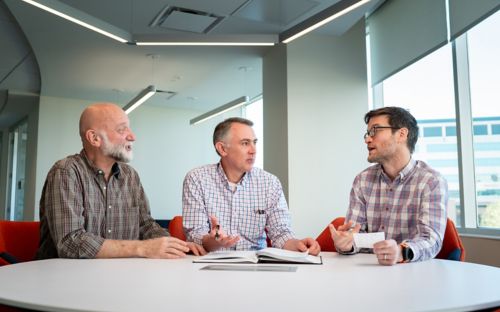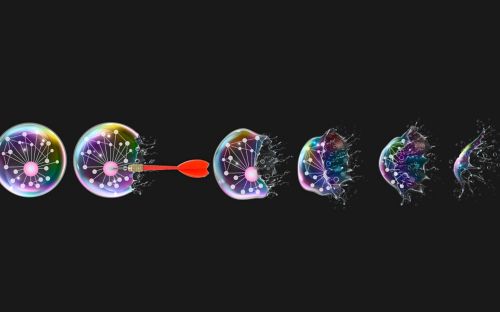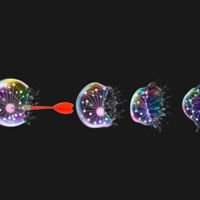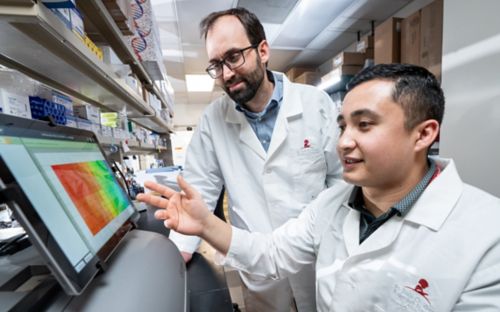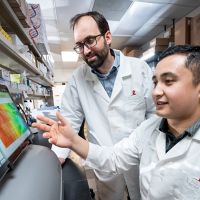Medulloblastoma and microirradiation: Tiny treatments for the most common malignant pediatric brain tumor

Martine Roussel, PhD, worked with radiation oncologist Christopher Tinkle, MD, to develop a technique to deliver cancer treatment to a tiny area and preserve surrounding tissue.
Medulloblastoma is an extremely dangerous cancer in children, and the course of treatment is very complex. It starts with surgical resection of the tumor. However, the tumor has usually spread, meaning that radiation of the brain and spine are required, followed by chemotherapy.
The goal of my research program is to develop a preclinical pipeline that mimics the treatment protocol in children with medulloblastoma. Such a pipeline will lead to treatment strategies that are more effective and that help spare patients from the side effects of radiation, which include neurological and endocrinological problems and cognitive deficits.
Fortunately, we have a microirradiator, a remarkable new machine that enables us to develop such pre-clinical protocols. The machine, about the size of two refrigerators, can target x-ray beams down to 0.5 millimeters, about half the width of a credit card, to an accuracy of 200 nanometers, the width of a human hair. With this machine, my collaborator, radiation oncologist Christopher Tinkle, has developed techniques to treat preclinical models that have had tiny samples of human medulloblastomas implanted. This approach ensures that we are mimicking as closely as possible the tumors we see in the clinic.
It was a considerable challenge to deliver precise beams of x-rays to the tumors, because they are no bigger than a grain of rice. Another problem we overcame was actually seeing the effects of radiation on the tumors. We met this challenge by tagging the cancer cells with the same chemical, called luciferase, that fireflies use to generate their light. So, by measuring the glow from the tumors, we could very accurately follow the effects of radiation treatment.
We have recently published our first scientific paper on the new preclinical protocol, and we concluded that it was effective, well tolerated by the animals and can be readily integrated into the research pipeline for developing new treatments, not only for medulloblastoma, but other central nervous system tumors.
In the study, we worked with the worst possible tumors — those that are the highest risk for children — Group 3 and Sonic Hedgehog (SHH)-type medulloblastomas with amplification of the MYC and MYCN, respectively and TP53 mutations for the SHH tumors. As aggressive as these tumors are, our radiation treatment produced a “problem,” in that it completely cured the models. It was an issue because these tumors always recur in patients. We wanted the treatment to spare some cancer cells, so we could incorporate follow-up chemotherapy into our treatment protocol. In new studies, we are reducing the radiation dosage, so we can produce a treatment regimen that closely mimics the course of the cancer treatment in patients.
Our ultimate goal is to develop a complete treatment protocol that accurately reflects the clinical effects of treatment — surgical resection, irradiation and chemotherapy. New irradiation strategies would seek to reduce the amount of radiation and identify treatment schedules that offer a window between treatments that would enable us to introduce “radiosensitizer” chemicals to make the radiation more effective. Our new preclinical protocol could also enable us to test chemotherapy drugs in children’s tumors that have already been approved for adults. For example, we can test the effectiveness of new drugs that specifically target an enzyme that drives a cancer to switch it off.
We look forward to integrating our new radiation protocol and the pre-clinical pipeline into future clinical trials at St. Jude, following current trials including SJMB12 and SJDAWN.
Our work would not have been possible without generous support from the National Cancer Institute and grants from CureSearch for Children’s Cancer; Alex’s Lemonade Stand Foundation; American Cancer Society CEOs Against Cancer–PA Chapter; and ALSAC, the fundraising and awareness organization of St. Jude.

